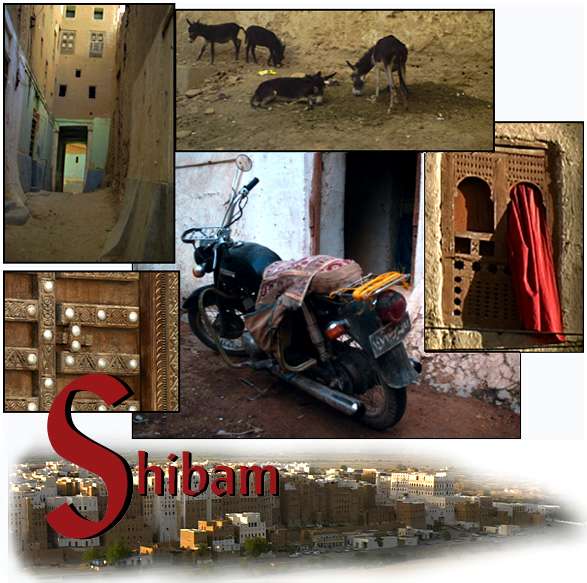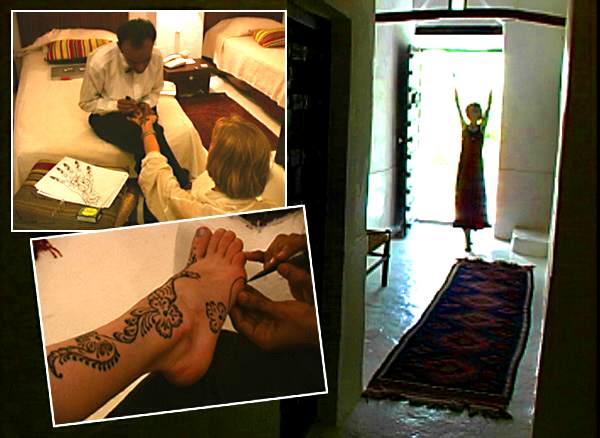 ©ViewZone Expedition 2001
Shibam replaced Shabwa, the ancient ruins we had just visited in the desert, as the strategic center of the Wadi Hadhramout region. In fact, as Ahmed told us, the sixty high-rise temples of old Shabwa probably once looked very much like Shibam.
 We climbed a canyon wall adjacent to the skyline of old Shibam. From this vantage point, we could see the fortress walls that surrounded the old city. We also saw the main gate -- once the only way inside this guarded metropolis. Shibam had a style all its own. The doors to the homes were made of heavy, thick acacia, and were decorated with elaborate patterns, ornate door knockers and locks. The same attention to detail was shown in the windows, which were carved from the same wood in a complex grid pattern and devoid of glass.
Shibam is extremely photogenic. Free range goats, sheep, chickens mingled with domesticated mules and cats. When the our cameras are spotted we became surrounded by children.
Many of the upper floors had been linked to adjoining homes by a balcony.
"Surrah! Surrah!, Take my picture!" The children were always anxious to pose everywhere in Yemen. In Shibam they were used to tourists. " Ghulum ! Ghulum ! Pen! Pen!" little voices called out.
Later, as we walked through the narrow streets, we were shaded by overhead structures. Many of the upper floors had been linked to adjoining homes by a balcony. This allowed visiting a neighbor without going up and down many stairs.
Shibam remains one of the worlds best kept secrets. The city is a special destination for students of architecture and history. It is restored and protected by UNESCO and has been named an official Heritage Site.
After a tour of the old city, we stopped for our customary cup of shai. Several local people approached us in tea shops, asking, "Where you are from?"
|
At the Sultan's Palace Hotel, I had a pleasant surprise. Saeed, the captain of the waiters, noticed that my henna design from Old Sana'a was fading from my hands. It had been almost ten days since I had it applied. He very modestly offered his services to freshen the delicate lines.
When the sun had set and the pool lights flickered on, Saeed arrived with his kit and went to work rejuvenating the art on my hands. He had fine control over the applicator and an easy way with his chatter. His prowess was shown when, reaching the end of the original design, he continued to free-hand the pattern even further up my arm. Looking down, I thought: could those beautiful things be my hands? I wiggled my fingers to check. Mmm, yes, they were my fingers!
Saeed eyed his handiwork with satisfaction.
"Perhaps next time you will let me paint your feet, also..." Saeed said in a soft thoughtful voice.
"What ever you want to do; go ahead! " I stretched out a bare foot for decoration. It didn't take much convincing Saeed. With fascination I watched my normal feet become extraordinary. Here was the Yemeni version of a seam up the back of a Western woman's nylons.
"Ah, shukrahn, Saeed! " I thanked him.
Saeed left me with the tools and a small glass bottle of the dye he used as a gift. He was a true artist. Before he left, he leaned down to my left ankle and gracefully signed my foot!
So who said Yemen was dangerous? Dangerous? "La!" Friendly? "Ay-way!"
|
Clickable Map of Yemen
Previous Page || ViewZone || --next-->
